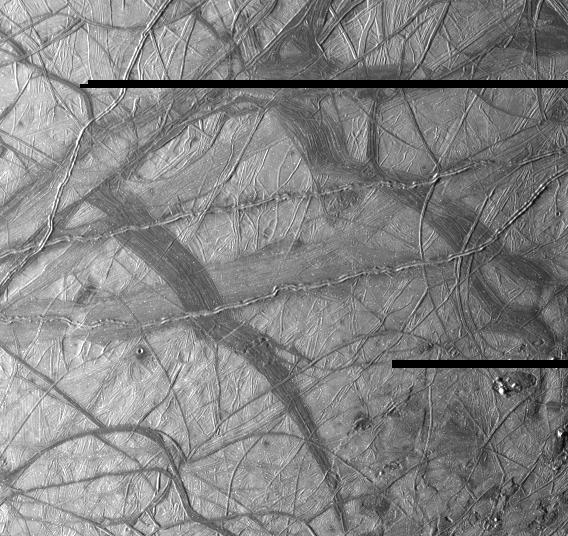Features that are related to ridges are bands. They are dark areas that vary in width up to several tens of kilometers across, making them larger than troughs found between class 2 ridges. They can have a non-uniform width and are commonly seen as wedges (Figure 15) and are found on the anti-jovian side of Europa (Tufts et al. 2000). Band material commonly stands higher than the surrounding material (Giese et al. 1999, Prockter et al. 2000, Tufts et al. 2000). It is believed that they form due to brittle ice which has broken, separated, and shifted transversely. The areas between the brittle ice are filled with darker, mobile material, such as a liquid or warm ice. In this way, they may form similarly to class 2 type ridges, but instead of the slabs of ice coming back together at the same point, they slide in a strike-slip motion, widening the gap between the ridges.

Figure 15. Wedge-shaped bands on Europa. Courtesy NASA/JPL.
Similar features are seen on Earth and are caused by buoyant ice rising through a denser fluid. The buoyancy of the ice can be due to warmer temperatures or composition. Ice free of impurities is less dense than salty, impure water (Prockter et al. 2000). Thus, bands are further evidence that Europa may contain a liquid, salty ocean beneath its ice shell.
Overview
Tidal Heating
Craters
Ridges
Chaos
Astrobiology
Bibliography

